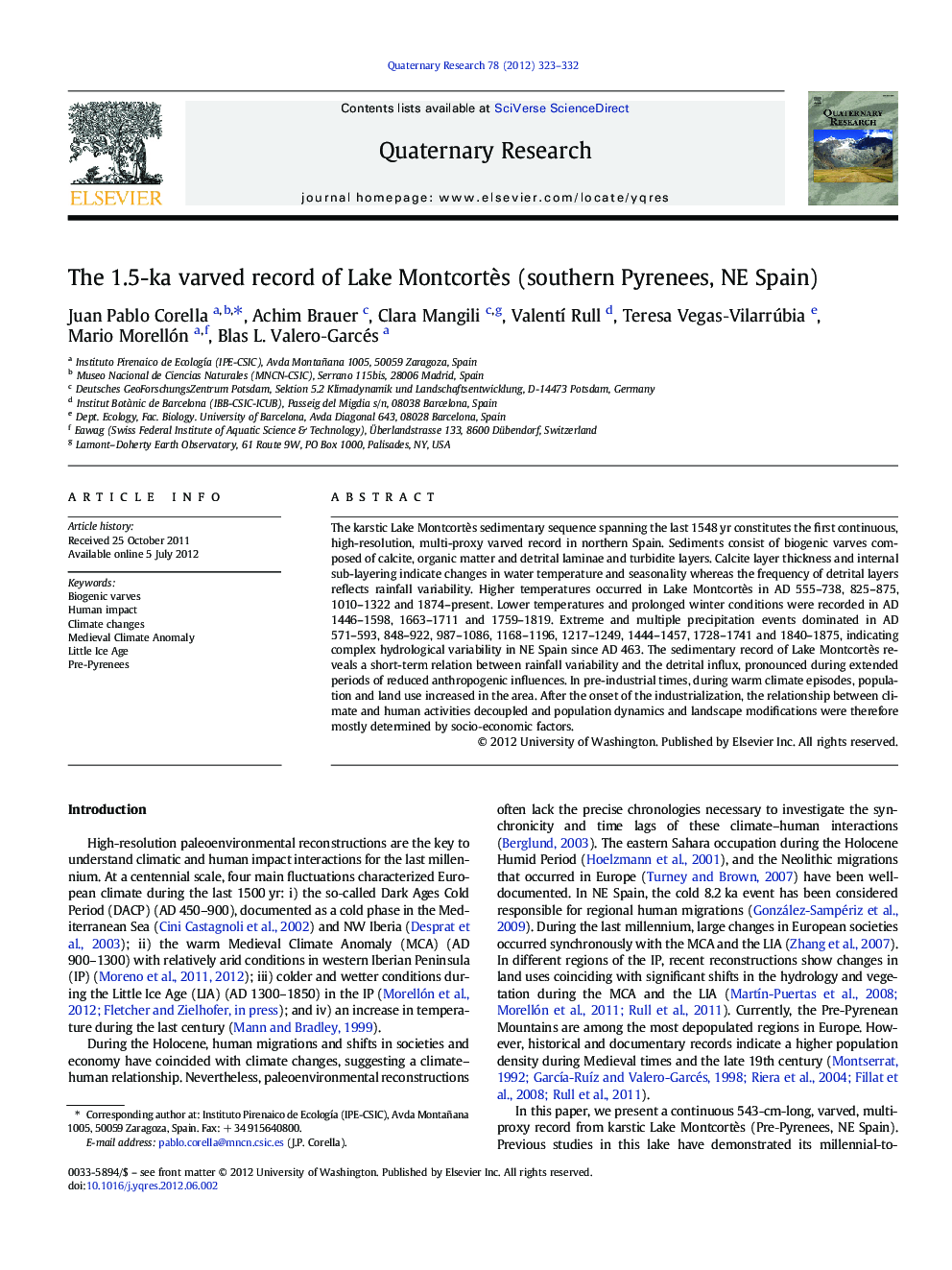| Article ID | Journal | Published Year | Pages | File Type |
|---|---|---|---|---|
| 1045463 | Quaternary Research | 2012 | 10 Pages |
The karstic Lake Montcortès sedimentary sequence spanning the last 1548 yr constitutes the first continuous, high-resolution, multi-proxy varved record in northern Spain. Sediments consist of biogenic varves composed of calcite, organic matter and detrital laminae and turbidite layers. Calcite layer thickness and internal sub-layering indicate changes in water temperature and seasonality whereas the frequency of detrital layers reflects rainfall variability. Higher temperatures occurred in Lake Montcortès in AD 555–738, 825–875, 1010–1322 and 1874–present. Lower temperatures and prolonged winter conditions were recorded in AD 1446–1598, 1663–1711 and 1759–1819. Extreme and multiple precipitation events dominated in AD 571–593, 848–922, 987–1086, 1168–1196, 1217–1249, 1444–1457, 1728–1741 and 1840–1875, indicating complex hydrological variability in NE Spain since AD 463. The sedimentary record of Lake Montcortès reveals a short-term relation between rainfall variability and the detrital influx, pronounced during extended periods of reduced anthropogenic influences. In pre-industrial times, during warm climate episodes, population and land use increased in the area. After the onset of the industrialization, the relationship between climate and human activities decoupled and population dynamics and landscape modifications were therefore mostly determined by socio‐economic factors.
